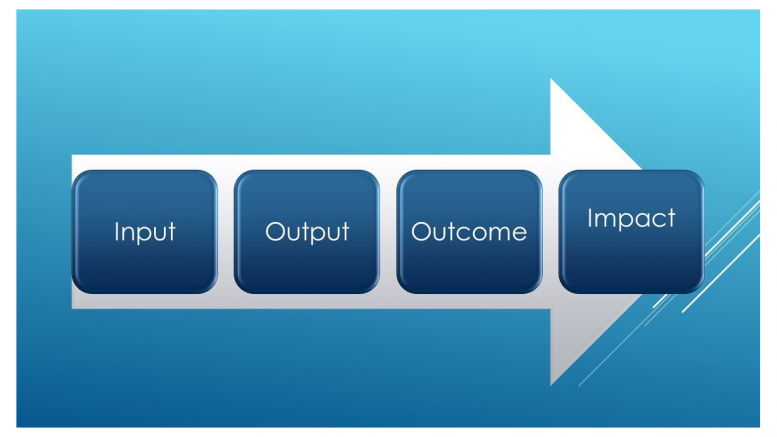What makes the Chief Communications Officer (aka Head of Corporate Communications) powerful and successful? What gets them closer to the CXOs and the boardroom? Why does the Top Management spend more time with them? Why do find a seat in every management meeting?
If you observe the functioning and thought process of some of the most successful and powerful Chief Communication Officers, a common trend emerges. These CCOs converge all their ERPs (efforts, resources & processes) towards creating ROO (Returns on Objective) for their organisation’s brand management across stakeholders. They work on the fundamental principle that for any successful organisation, achieving ROO is the stepping stone toward achieving ROI (Returns on Investment). For this, they add ERP muscle power and take charge of each cog of the Corporate Communication cycle – INPUT OUTPUT & OUTCOME.
A brand communication cycle goes – INPUT – OUTPUT – OUTCOME – consists of 9 intricate and interdependent blocks or cogs. The diagram below illustrates it:

In the above diagram, INPUT includes:
- Listening to stakeholder mood
- Content aggregation
- Competition benchmarking & Target Setting
- PR Planning
- Plan execution
OUTPUT measurement includes:
- PR coverage output evaluation
OUTCOME measurement includes:
- Brand Recall measurement (ROO)
- Brand Engagement measurement (ROO)
- Brand Conversion measurement (ROI)
If one were to draw an industry average, out of the 9 milestones or cogs stated above, more than 95% of the corporate communications industry demonstrates a decent amount of control on 1. content aggregation 2. planning 3. execution, and 4. coverage output evaluation. That makes an average industry score of 4/9. However, even on these four blocks, the robustness and efficacy remain debatable.
On the contrary, the score of disruptive CCOs, who think differently, and are valued by their Top Management, is at least 6-7/9.
Powerful and successful Corporate Communications desks endeavour to take charge of at least the first 7 i.e., Listening, Content Aggregation, Competition benchmarking, Target setting, Planning, Plan Execution, Coverage Evaluation, and Brand Recall measurement. Both data analytics and database management play crucial roles in monitoring, controlling, and increasing the efficiency of each cog.
These powerful CCOs and their super-efficient teams use and leverage scientifically designed ERPs – efforts, resources, and processes – for each of the seven cogs mentioned above. One of the most important of these is the monthly Targeted vs Achieved reconciliation exercise they undertake diligently.
What benefits does the Corporate Communications desk reap?
- The CCO & team get closer to the various CXOs and the board room because they confidently demonstrate ERPs that are delivering (brand ROO) OUTCOME scores…not just coverage quantity and quality of OUTPUT scores.
- The SOPs across the entire communication assembly line – starting from listening to the outcome blocks – is superefficient, interconnected, and work on very fast Turn Around Time.
- The Corporate Communication teams are always prepared for BAU (business as usual) and BNAU (business not as usual) scenarios throughout the year.
- The working relationship between Clients and PR Firms becomes stronger. Evaluation or appraisal processes generate win-win outcomes.
- The team gets a better understanding of:
- the competition thought process
- media intelligence & SWOT
- Better management and optimisation of the budget allocated by the management
- Top management’s dependency on Corporate Communication function increases…quantity and quality of time spent between Top Management & Corporate Communication go up
- The measurement and data analytics framework become futuristic – becomes sharper and more sensitive to changing stimuli
In a nutshell, the corporate communications team strategically ensures that they get all possible answers under who, what, when, where, why & how for their organisation’s brand management and insulate the balance sheet.
The views and opinions published here belong to the author and do not necessarily reflect the views and opinions of the publisher.



Leave a comment